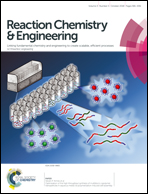Metal-based heterogeneous electrocatalysts for reduction of carbon dioxide and nitrogen: mechanisms, recent advances and perspective
Abstract
In recent years, the electrochemical reduction of carbon dioxide (CO2RR) and the reduction of nitrogen (NRR) have attracted increasing attention due to their potential to transform energy from renewable and clean sources to chemical energy stored in value-added chemicals, such as hydrocarbons, alcohols and ammonia (NH3). Meanwhile, CO2RR can also reduce the global carbon footprint and address global climate change, while NRR may significantly improve the energy efficiency of NH3 production. However, because CO2 and N2 molecules are inert, electrocatalysts with low overpotentials, high selectivities and superior faradaic efficiencies (FE) are required to enhance these two kinetically slow reactions. For the first time, this review discusses the similarities and differences between CO2RR and NRR in the following aspects: (1) fundamental theory of the reaction mechanisms and the corresponding catalyst design principles; (2) reaction systems and product analysis methods; (3) recent advances in heterogeneous electrocatalysts synthesized from different metals with various compositions, structures and morphologies. Much progress has been achieved to improve catalytic performance towards CO2RR and NRR. Finally, an outlook of future developments for CO2RR and NRR is proposed.

- This article is part of the themed collections: Reaction Chemistry & Engineering most-read Q1 2019 and 2018 Reaction Chemistry & Engineering Hot Articles


 Please wait while we load your content...
Please wait while we load your content...